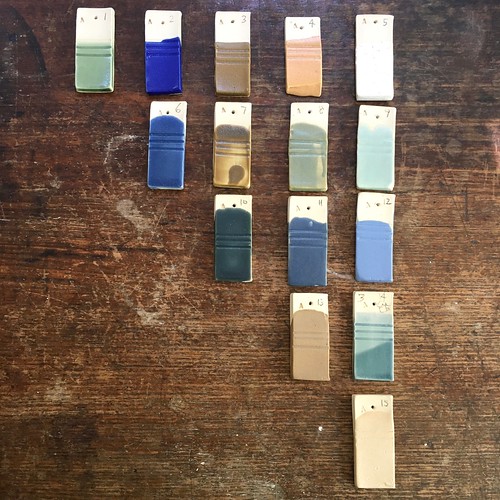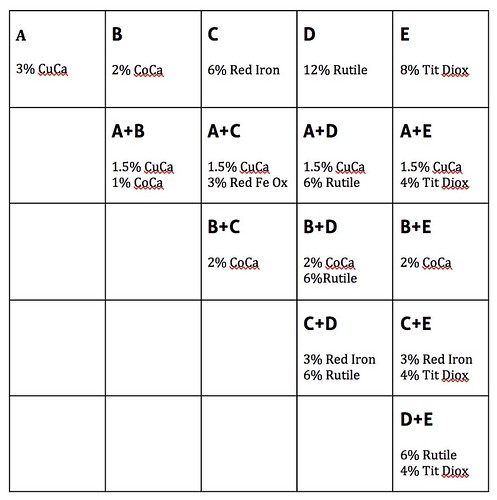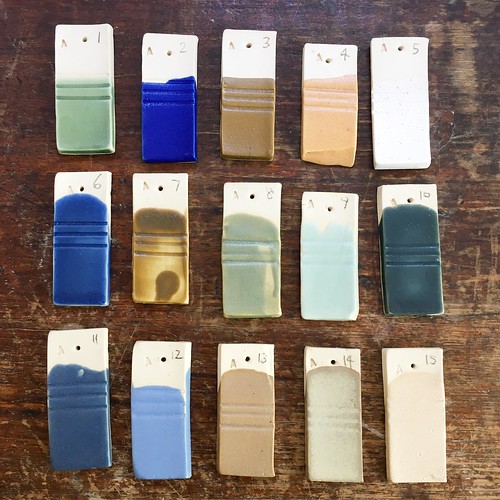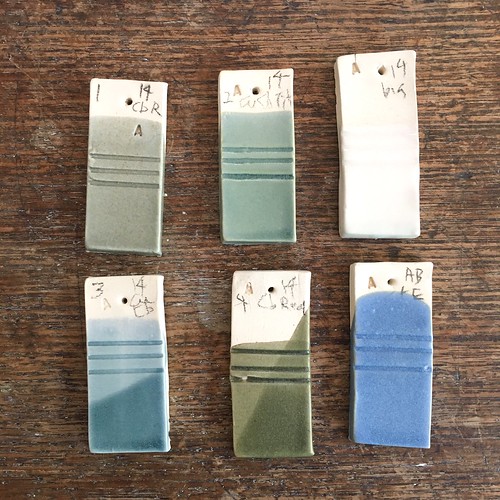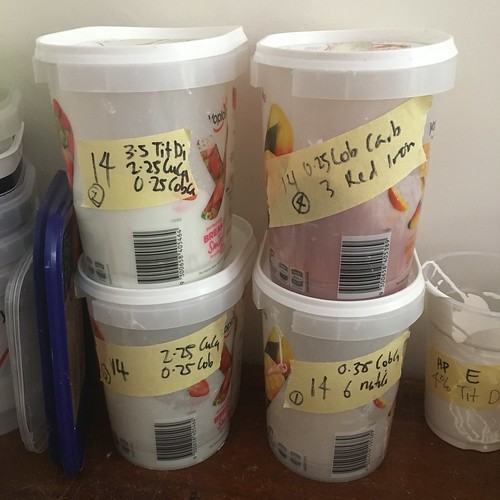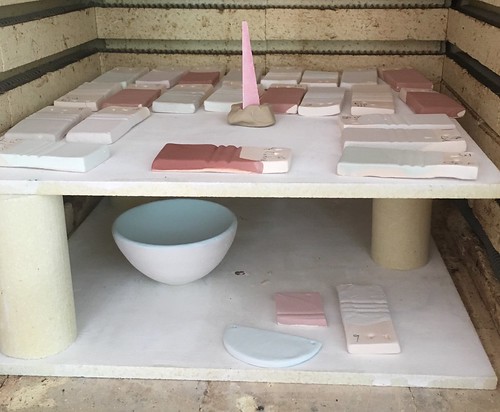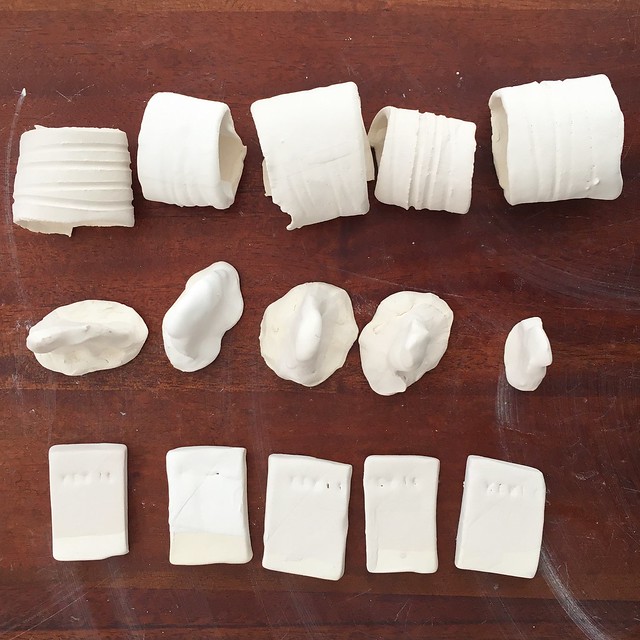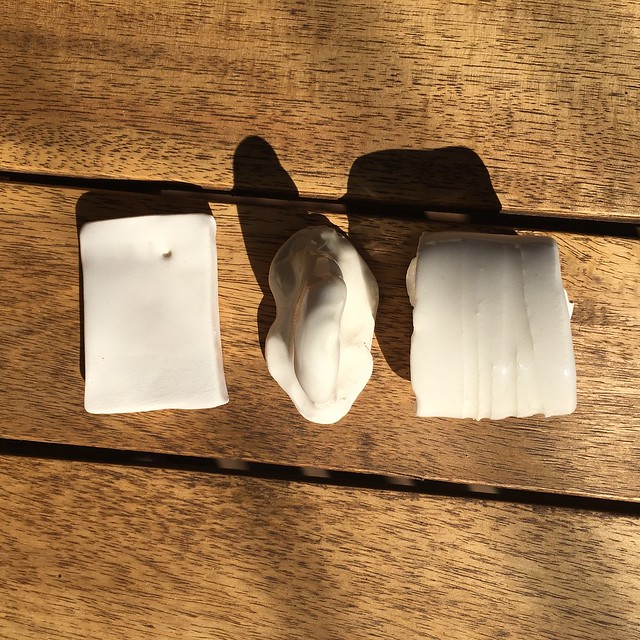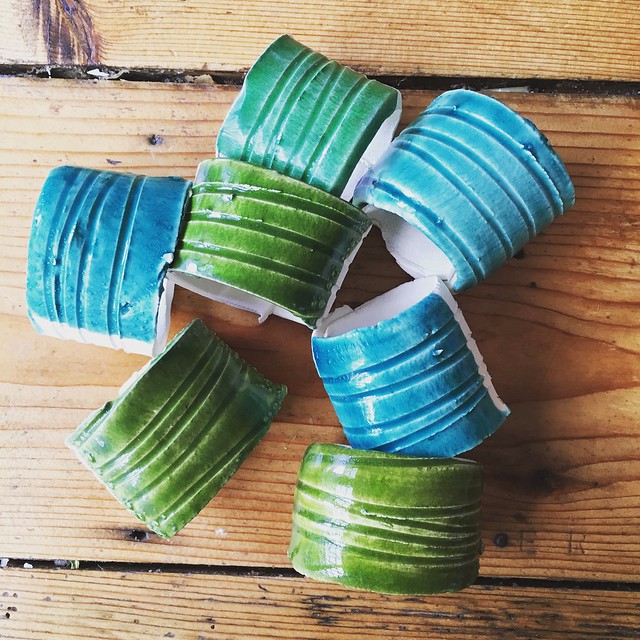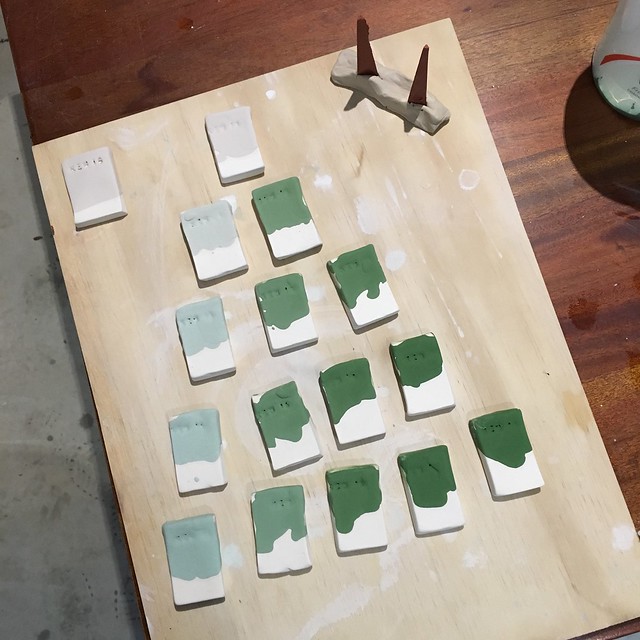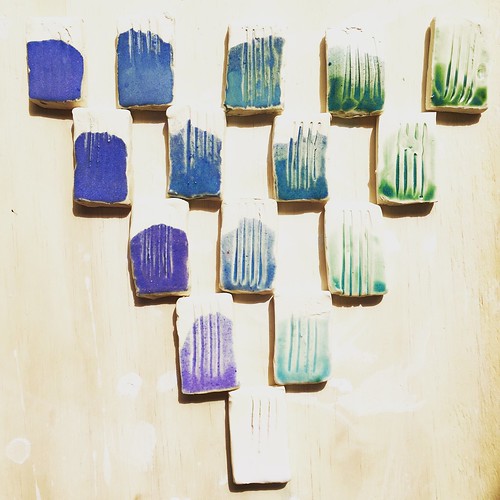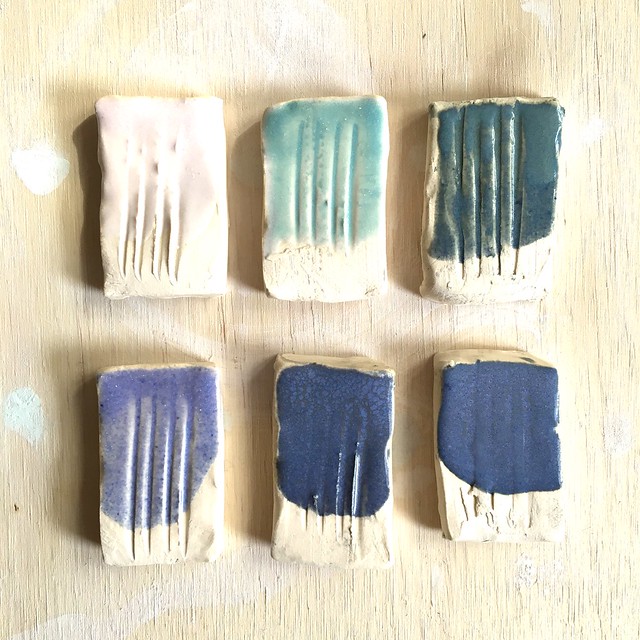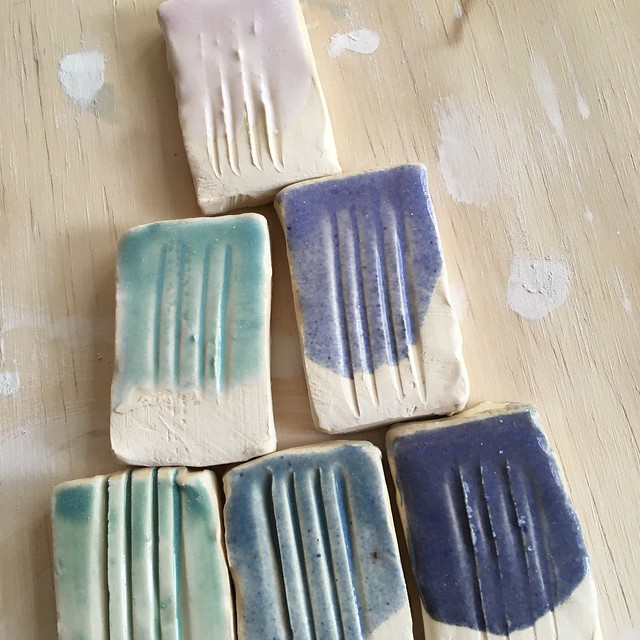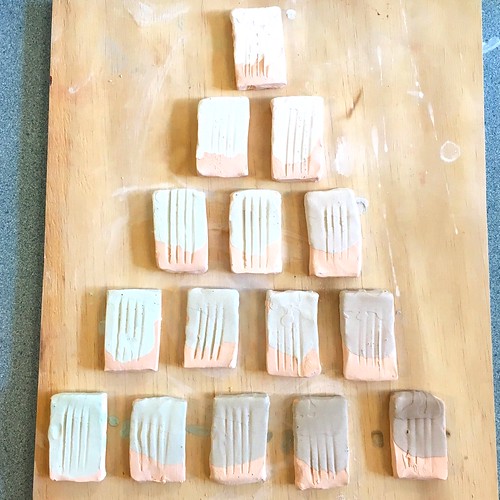GREENS and BLUES
Alicia Clausen's Turquoise Matte 'The One'
Nepheline Syenite 60
Strontium Carbonate 25
Silica 9
EPK 4
Lithium Carbonate 2
Copper Carbonate 3.5
Bentonite 4
Epsom Salts 1
Chun Seafoam
Soda Feldspar 41
Silica 27
Whiting 15
Eckalite 5
Zinc Oxide 12
Bentonite 4
Epsom Salts 1
Chun Seafoam
Soda Feldspar 41
Silica 27
Whiting 15
Eckalite 5
Zinc Oxide 12
Copper Carbonate 5
Titanium Dioxide 5
Bentonite 2
Pinnell Seafoam
Soda Feldspar 51.3
Strontium carbonate 25.5
Titanium Dioxide 5
Bentonite 2
Pinnell Seafoam
Soda Feldspar 51.3
Strontium carbonate 25.5
EPK 13.6
Frit 3134 9.6
Frit 3134 9.6
Ball Clay 9.5
Strontium Carbonate 19
Lithium Carbonate 5.9
Strontium Carbonate 19
Lithium Carbonate 5.9
Copper Carbonate 5
Titanium Dioxide 5
Bentonite 2
Arrowmont Blue Green
Nepheline Syenite 44.6
Silica 13.3 Whiting 11.1
Eckalite 13.3
Gerstley Borate 11.1
Lithium Carbonate 6.6
Titanium Dioxide 6.2
Titanium Dioxide 5
Bentonite 2
Arrowmont Blue Green
Nepheline Syenite 44.6
Silica 13.3 Whiting 11.1
Eckalite 13.3
Gerstley Borate 11.1
Lithium Carbonate 6.6
Titanium Dioxide 6.2
Cobalt Carbonate 1
Bentonite 2
Selsor Chun
Soda Feldspar 34
Silica 30
Whiting 10
Dolomite 6
Frit 3134 17
Zinc Oxide 3
Tin Oxide 1
Bentonite 2
LIGHT BLUE
Selsor Chun
Soda Feldspar 34
Silica 30
Whiting 10
Dolomite 6
Frit 3134 17
Zinc Oxide 3
Tin Oxide 1
Red Iron Oxide 0.5-2
Bentonite 2
Nepheline Syenite 27.2
Silica 25.3
Dolomite 16.2
Bentonite 2
PURPLE
Ashley’s Best (purple)Nepheline Syenite 27.2
Silica 25.3
Dolomite 16.2
Eckalite 13.3
Talc 11.4
Lithium Carbonate 6.6
Lithium Carbonate 6.6
Cobalt carbonate 2-4
Bentonite 2
Bentonite 2
Whiting 8.9
Eckalite 11.1
Gerstley Borate 11.1
Lithium Carbonate 8.9
Eckalite 11.1
Gerstley Borate 11.1
Lithium Carbonate 8.9
Rutile 4
Titanium Dioxide 6-10
Bentonite 2
Titanium Dioxide 6-10
Bentonite 2










